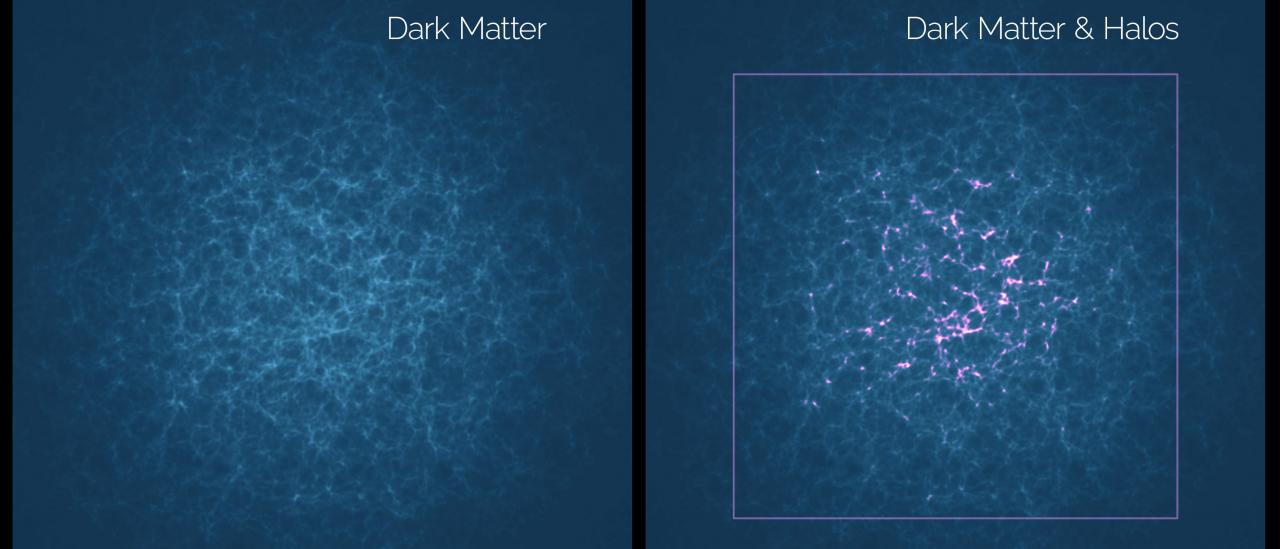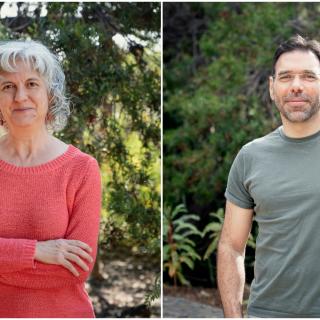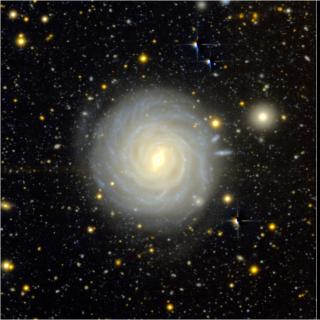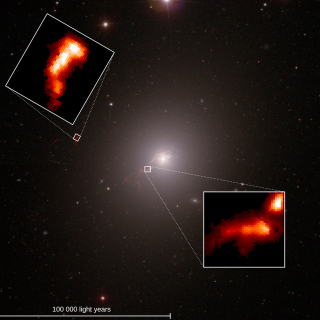The group of Cosmology and Large Scale Structure at the Instituto de Astrofísica de Canarias (IAC) has developed, using the BAM (Bias Assignment Method) numerical computer code, a novel strategy to generate precise synthetic catalogues of galaxies to reproduce the observations of the census of galaxies, which will help to yield valuable cosmological information and to elucidate the nature of dark energy.
This development, published in the journal Monthly Notices of the Royal Astronomical Society (MNRAS), should offer great progress in understanding the relation between the objects made up of dark matter which have collapsed under gravity (known as dark matter halos), which house the galaxies, and the underlying cosmic web.
The IAC Severo Ochoa researcher Andrés Balaguera-Antolínez, who is the main developer of the BAM numerical code, says that the code is based “on the idea of mapping the distribution of the halos within the dark matter by complex analytical models. BAM takes a step forward in learning, through N-body simulations, all the statistical characteristics of the distribution of halos in the Universe, which would be hard to describe by an equation”.
“To understand better the importance of this work, let us imagine a floor covered with tiles of different colours and shapes, which form a pattern similar to a Roman mosaic. Suddenly, a wizard arrives with a pack of cards and distributes the cards, each on a different tile, according to some secret rules. The rules are related to the colour, the suit, or the number of the card, and the tiles and their colours, shapes or situations within the pattern, as well as the interactions between the cards and the tiles. The game consists in working out the rules of the wizard”, explains Francisco-Shu Kitaura, coauthor of the articles, and leader of the group of Cosmology and Large Scale Structure at the IAC.
“In our case, the cards are the number of halos and their properties in the elements of cosmic volumen, and the mosaics are the distribution of dark matter defined in the corresponding volumen element. The pattern formed by the tiles is the cosmic web which results from the formation of structures. We have developed the machinery which reveals the rules of the wizard”, explains Kitaura.
In fact, what this team has achieved is that the distribution of the resulting halos is equivalent to detailed calculations of gravity with N-body codes, which saves between 4 and 5 orders of magnitude in the computation time. The BAM code can reproduce the distributon of dark matter and its tracers within the Universe, and it does this in a matter of minutes, so that it can generate thousands of catalogues. This allows the estimation of the uncertainties for a unique Universe in which the “dice” of the distribution of the structures which conform it are thrown only once.
“When we looked at the results we were surprised by the precision attained by our method compared with the costly simulation calculations. They are indistinguishable”, claim Marcos Pellejero-Ibáñez, a former doctoral student at the IAC and now a Juan de la Cierva researcher at the Donostia International Physics Centre, and Martha Lippich (Max Planck Institute for Extraterrestrial Physics, Germany) who took care of the statistical analysis, and co-authored on other articles about the BAM code.
The “machinery” developed by the LSS team permits the generaton of statistically independent replicas of the observed Universe. This is a necessary job for an exhaustive statistical analysis of the millions of galaxies which are expected to be observed by experiments in which the IAC is participating. The precision of these results is based on detailed comparisons with numerical simulations generated by Claudio dalla Vecchia, IAC researcher, and Ariel Sánchez (MPE), both coauthors of the main article.
“The process of replicating the Universe with BAM is very similar to that adopted by the Spanish conquistadores in the New World during the XVI century”, Balaguera-Antolínez assures us. “They exported a ‘city model’ inspired by the recently founded (1497) city of San Cristóbal de La Laguna, and they replicated the same global structure (pattern of the streets, assignment of terrain, hierarchical distribution around the main square of the city) in different landscapes, geographies and climates. Today, from La Laguna, we are not replicating cities, but entire Universes”.
Main article: Balaguera-Antolínez, A.; Kitaura, Francisco-Shu et al. “One simulation to have them all: performance of the Bias Assignment Method against N-body simulations”. MNRAS: https://ui.adsabs.harvard.edu/abs/2020MNRAS.491.2565B/abstract
Related articles:
- https://ui.adsabs.harvard.edu/abs/2019MNRAS.483L..58B/abstract
- https://ui.adsabs.harvard.edu/abs/2020MNRAS.493..586P/abstract
- https://ui.adsabs.harvard.edu/abs/2020arXiv200511598K/abstract
More information:
- http://research.iac.es/proyecto/cosmolss/pages/en/research/mock-galaxy-…
Contact at the IAC:
- Andrés Balaguera Antolínez: balaguera [at] iac.es (balaguera[at]iac[dot]es)
- Francisco-Shu Kitaura: fkitaura [at] iac.es (fkitaura[at]iac[dot]es)




